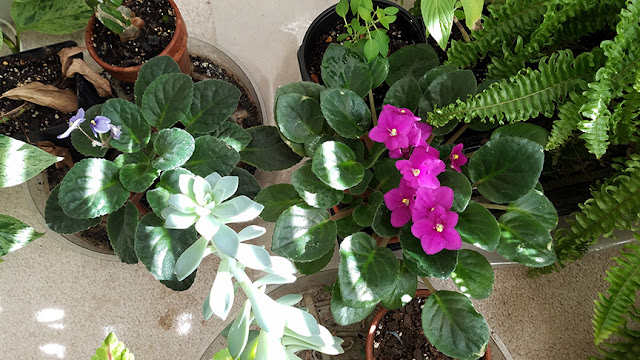 |
| Pages from my botanical journal. |
I wasn't thinking of "blue" paintings like Picasso's when I titled this post--I'm just at that point in mid-winter when the blues set in, when I wish I could be somewhere sunny and warm instead of where I am. But Florida is beyond my budget this year...
We've had no snow on the ground this winter thus far, and with a lot of cold and drizzly days one would think at least the soil had enough moisture, but actually it's been a record dry season too. Everything just looks more drab and colorless than usual--not even a good atmospheric effect like fog to give any illusion of interest.
 |
| My back yard this morning. |
In my studio at least, I can find some colors to please my eye. My journals are steadily filling up with drawings of whatever botanical material I can find around, and some non-botanical stuff, like the local birds. I have set up three feeders this winter: a finch sock, a hanging suet cage, and a platform feeder for birds such as cardinals, who can't get at the other two.
I tried a quick sketch of one of the White-breasted nuthatches that frequent the feeders, but he's so fast, it's difficult to capture anything but a gesture, if that. I think I got the attitude, but had to consult my Sibley's Bird Guide to get the right markings of the plumage. My bird still doesn't have the right proportions, but I'll keep working on that until I can do better.
 |
| Tulip Tree Flower sketch, colored pencil. |
I'm finishing my illustrations for the Virginia Native Plant Society (VNPS) brochure--the Tulip Tree flowers above were drawn from some old photos I'd taken during a Botanical Artist Society of the National Capital Region (BASNCR) field trip to Tudor Place, a historic estate and garden in Georgetown, in DC. Their garden had one mature Tulip Tree whose branches swept down almost to the ground, and gave a great opportunity to view the flowers at eye level and from above.
The other drawing is of a sprig of American holly, as a companion piece to the Tulip Tree. I'm still working out the arrangement of the leaves and berries on the branch in graphite, and will transfer it to good paper when I have the design worked out.








































